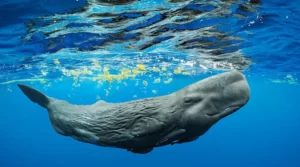“Dedale of Power”, Portraits of African Heads of State by Kehinde Wiley
Interpreting Power and Identity in Wiley's Portraits
Kehinde Wiley drew inspiration from the codes of aristocratic, royal, and military portraits painted in Europe between the 17th and 19th centuries to represent contemporary African leaders. In his paintings, one can find the proud posture and piercing gaze borrowed from court portraits. However, the artist reinvents these conventions by blending them with his own instinctive and contemporary aesthetic. He thus transposes European historical traditions into a modern interpretation, reflecting cultural diversity and the current era.
But perhaps the most laughter comes from the role of the devoted nanny, with her melodious accent and infectious joie de vivre despite setbacks. Portrayed with hilariously accurate precision, this gallery of characters rooted in reality sheds valuable light on her journey and the worlds she has inhabited. Thanks to Roukiata Ouedraogo, we delightfully understand the workings of a society caught between two cultures through these vibrant figures.
The Fusion of Traditional African Motifs with Contemporary Art
Each portrait is the result of a long-nourished dialogue between Kehinde Wiley and the represented head of state. During their meetings, they discussed together the history of power portraits in European art to develop a composition that reflects the unique personality of each leader.
The canvases thus reveal the individual’s own identity according to the artist’s and his model’s vision. They uncover elements characterizing their countries as well as various strategies of communication and personal image construction.
Share on social

Dive into the Heart of the Mysteries of the Oceans at the Exhibition Oceans, the Immersive Odyssey
This fall, the Atelier des Lumières invites you on a journey into the depths of the oceans. Through the stunning photographs of Brian Skerry, discover the richness and fragility of marine ecosystems during the immersive

Loading Exhibition at Grand Palais Immersif: A Digital Art Revolution
Interactive art installation at Loading exhibition, Grand Palais Immersif

Dive into the Heart of the Mysteries of the Oceans at the Exhibition Oceans, the Immersive Odyssey
This fall, the Atelier des Lumières invites you on a journey into the depths of the oceans. Through the stunning photographs of Brian Skerry, discover the richness and fragility of marine ecosystems during the immersive



